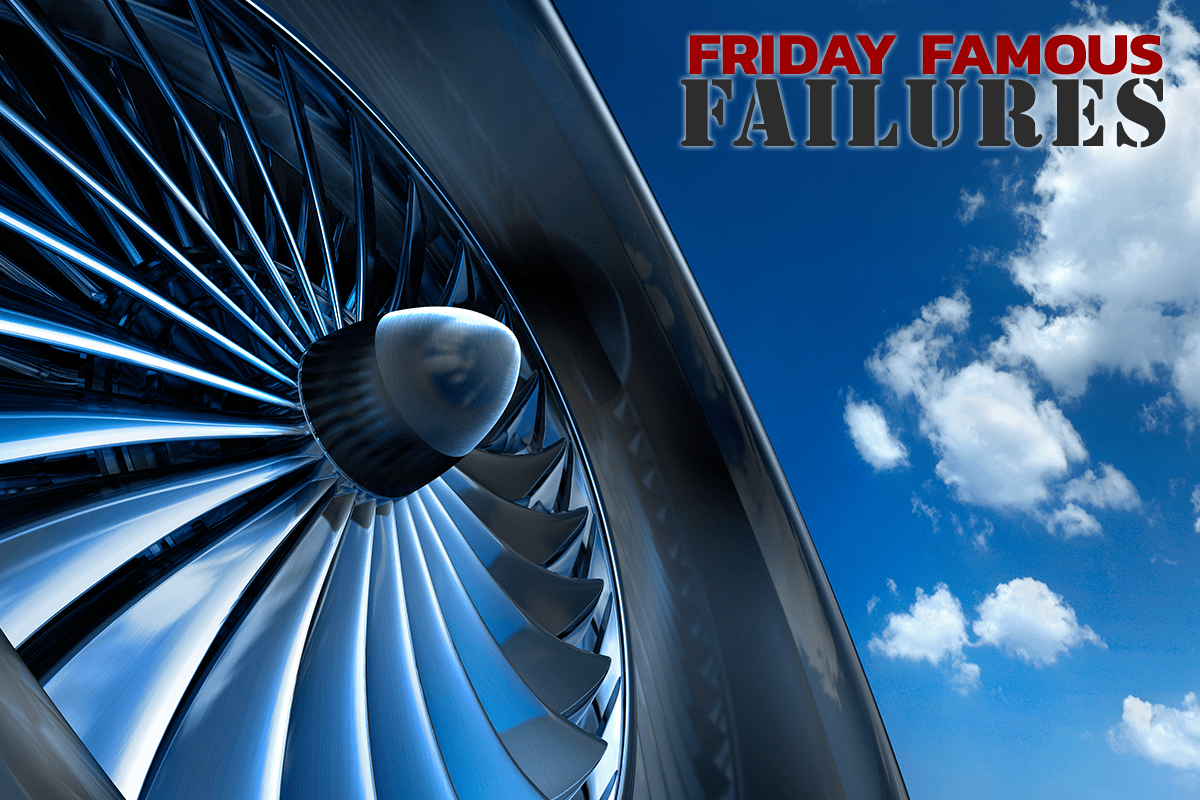One night in September 1959, a Lockheed Electra L-188A turboprop aircraft with 28 passengers and 6 crew apparently disintegrated mid-flight over Buffalo, Texas.
The Electra was new at the time, the first large turboprop airliner built by a United States aircraft company. It represented the pinnacle of aviation technology and boasted the highest thrust-to-weight ratio of any commercial aircraft then in service, as well as large “Fowler Flaps” that significantly increased the wing area at low speed. These features made its aerodynamic performance even better than current commercial aircraft on short runways or at high altitudes.
Yet, only six and a half short months after the Texas crash, the unthinkable happened again: another Electra disintegrated at 18,000 feet over Indiana. What was wrong with these airplanes?
The Incidents
Braniff Airways Flight 542. On 29 September 1959, Braniff Airways Flight 542 departed from Houston, Texas, in the evening on its way to Dallas. The weather report showed scattered clouds with no lightning and only light turbulence. As it neared its destination, however, it made a radio call to its operations center with a request for maintenance after its landing in Dallas. It was never heard from again.
The wreckage of the airplane was found about three miles southeast of Buffalo, Texas, and was scattered across two and a half miles. Witnesses nearby reported hearing loud noises resembling the “clapping of two boards together,” “thunder,” and the “roar of a jet breaking the sound barrier,” and most reported seeing a fireball in the sky. Notably, the weather report was correct in that there was no lightning reported in the area on that day.
Northwest Airlines Flight 710. On 17 March 1960, Northwest Airlines Flight 710 departed from Minneapolis shortly after noon and landed at Chicago Midway airport. Passengers on this flight described the landing as “very hard.” However, as there was no apparent damage to the aircraft, it was refueled for a subsequent flight to Miami. Expected weather was clear skies with no turbulence reported.
Flight 710 took off from Chicago without incident, and reported its position at about 3:15 pm, flying at 18,000 feet above Scotland, Indiana. Shortly after that, crewmembers from a flight of six US Air Force airplanes performing an inflight refueling exercise nearby reported seeing several puffs of smoke followed by audible explosions. The Air Force witnesses then reported seeing a large object falling from the smoke puff to the ground.
The main section of the aircraft disintegrated upon impact with the ground, creating a crater 30 feet wide and 12 feet deep. The remainder of the wreckage was scattered over 1,500 feet on a line stretching to the southwest.
What caused this disaster?
Engine Mount Failure due to Hard Landings. The Electra aircraft flight characteristics were such that reducing power for landing at too much height above the runway caused a high sink rate to develop and resulted in a harder-than-normal landing. The Lockheed Electra Achievement Program (LEAP) concluded that enough such events, or a single significantly hard landing, could cause the aft engine mounts (on the rear of the wings) to weaken or fail mechanically. Without the stiffness of the aft engine mounts, the phenomena of “whirl-mode flutter” described below could be catastrophic.
Significant Additional Loads on Intermediate Wing Ribs. The first issue that may have caused the airplanes to break up was significant additional loads beyond the design calculation on the wings’ intermediate bracing ribs caused by shell distortion, which is material distortion (in this case, the surface of the wing) due to uneven expansion and contraction due to heat or other factors. These additional loads on the intermediate ribs were not known to the designers and not identified in the development of the airplane, so they were not accounted for in the aircraft design. Also, these additional loads accelerated the progress of fatigue on the wing members, potentially to the point of failure.
Whirl-Mode Flutter. The phenomenon known as “whirl-mode flutter” occurs when the stiffness of the engine mounts interacts with the circular force (gyroscopic torque) of the propeller drive shaft, which can cause resonant frequencies and vibrations in the wing structure that grow in amplitude and intensity. Under normal circumstances, this flutter is constrained by the maximum amount of flex in the engine mounting, but in cases where damage makes the whole structure of the aircraft–including wings and engine mounts–less stiff, flutter can occur more easily and be more destructive. LEAP theorized that the “hard landing” experienced by Flight 710 before the crash might have weakened the wing and engine mounts and been a causal factor to the in-flight breakup.
Effects of the disasters
An investigation into the crash of Flight 542 by the Civil Aeronautics Board concluded that the aircraft had disintegrated because of left wing structural failure (i.e., it broke off) due to whirl-mode flutter.
After the crash of Flight 710, the FAA ordered Lockheed to conduct a design review of it’s Electra Aircraft in order to determine what could possibly cause an aircraft to break up in flight, particularly any potential cause of structural wing failure. The design review was called the Lockheed Electra Action Program (LEAP), and it identified the main causal factors of both disasters.
A study of the wreckage of Flight 710, both on-site and in Lockheed’s laboratories, by both Lockheed and the Civil Aeronautics Board, also concluded that the aircraft had broken apart in flight due to oscillations of the outboard two engine nacelles violent enough to cause the right wing to fail structurally. The presence of whirl-mode flutter in the Electra airplane was confirmed in a NASA wind tunnel, where Lockheed and NASA engineers tested a scale model of the airplane at various speeds and in various simulated flight regimes. The as-designed scale model showed no flutter, but after the engineers weakened the wing structures, the vibrations and torque of the engines became resonant with the wing and caused catastrophic flutter.
The conclusion of LEAP was that in Electra aircraft where the engine/wing structure had been weakened, whether caused by accelerated fatigue, additional force loading of the intermediate wing ribs, or by an event such as a hard landing, whirl-mode flutter became likely and caused the catastrophic failure of the airframe of Flights 542 and 710. The probability of whirl-mode flutter increased with external forces such as turbulence.
In response to the findings of LEAP, Lockheed retrofitted their Electra aircraft with engine mountings and nacelles that were stronger and less susceptible to fatigue and damage from hard landings. Lockheed also increased the strength of the wings in order to increase the strength and stiffness of the airframe. Since those improvements were made, no Electra ever experienced whirl-mode flutter again. Yet, the two high-profile crashes destroyed public confidence in the airframe, and no additional Electras were ordered.









Very interesting, thank you
What about the error that was made in determining the endurance limit of the particular aluminum that was used?
As a pilot and engineer very interesting. Interesting how two new technologies – Fowler flaps and high power turbines – had overlapping issues that created operational failures. Some fighter aircraft in WWII experienced wing failures in high G maneuvers. As a result the main spar was strengthened. Failures increased after strengthening. The reason was the differential stiffness between the main spar and the secondary spar actually increased the wing twist thus angle of attack and thus the wing loading. i.e. the fix made it worse.
I’m a Mechanical Engineer and I am very sensitive to developing correct and bounding design load conditions and combinations. I feel that the initial load profiles should have included the hard landing loads and thereby potentially identified this failure mode.
There is a bit more to the story – The Electra was flown at 400 knots – a speed that made it competitive with turbo jet aircraft such as the 707, 727, and DC 9 for short to intermediate routes (think 500 nm). In addition to changing the wing structure, the aircraft was limited to 250 knots which destroyed its competitive advantage over the turbo jets. In addition, the structure of the wing was a CEE channel. No one checked the shear lag of the CEE channel under dynamic loading. The shear lag (torsion induced from geometric asymmetry) was not a factor a lower speeds, but at higher speeds was an amplifier of the whirl mode flutter.
The US Navy never had a problem with the military version because the P-3 was limited to 250 knots max speed.
How frequently do today’s designers perform an analysis with a degraded structure to identify possible failure modes? I don’t recall any such during my work in the propulsion world.
These failures, along with passenger perception and the time out of service for retrofits, were severe hits against the Electra’s commercial success. The DeHavilland Comet had a similar demise due to fatigue.
Yet the Electra lived on for decades in the form of the Lockheed P-3 Orion submarine hunter aircraft. Over 750 were built. The aircraft was and is operated by the US Navy and nearly 20 other nations. It joins Boeing’s KC135 and B-52, and Lockheed’s U-2 and C-130 as one of the five US military aircraft with over 50 years of active use.
I read a book about the Electra long ago. The Illinois crash was interesting because the investigator could not account for all of the aircraft structure until they examined the crafter. The fuselage had impacted the ground at over 500 mph. Passengers and the fuselage structure was compressed and covered with dirt and was not found until the inspection team started digging into the crater. The fall from the sky mu st have bee horrifying for the aircraft crew and passengers.